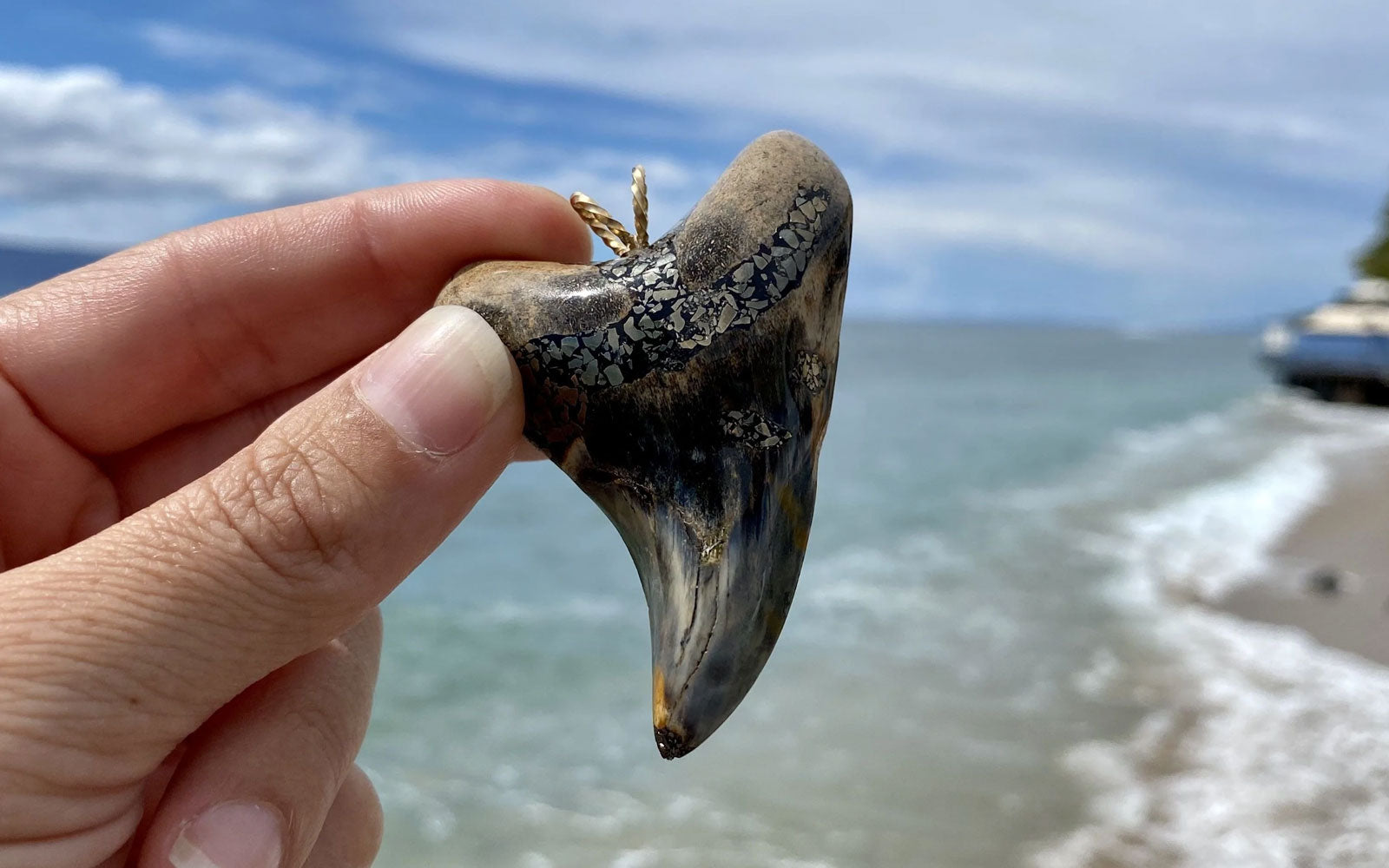
All About Parotodus Benedeni
Would you believe it may be safer now than ever to get in the water? Imagine laying on the beach in Maui, with the Jaws theme on repeat in your head, gazing over the vast ocean and wondering about just what lies under the water’s surface. Believe it or not, the sharks circling your vacation paradise are a smaller version of what swam below a million years ago.

Parotodus benedeni is one such shark. Now extinct, this predator grew to be one of the largest sharks of its time, commonly reaching lengths of up to 25 feet. It may have started as a smaller shark, but it increased over geological time to become a significant predatory challenger to other sharks of that time – including the incomparable megalodon.
Ocean creatures can seem mysterious, and often, little is known about these monsters of the deep. Capturing a glimpse of these rare and extinct predators makes shark teeth belonging to the Parotodus that much more exciting! And to own a fossil that confirms the Parotodus did exist? Priceless.
While there is much to learn about the Parotodus benedeni, and much we may never discover, there are many varieties of mackerel shark alive today that offer some clues about the Parotodus.
What was Parotodus Benedeni?
Parotodus benedeni is commonly referred to as the false mako shark. This extinct genus of mackerel shark lived 53 to one million years ago during the Eocene and Pleistocene Epochs. The Parotodus is considered a relatively rare species even though their fossils are regularly found across the world, supporting the thought that the Parotodus primarily inhabited open waters.
Other Sharks Found in Open Waters
- Oceanic white tip shark
- Blue shark
- Megalodon

The Parotodus living in open waters is evidenced by their teeth being found primarily in deposits under the Pacific and Indian Oceans and on islands far away from continental lands. In addition, Parotodus teeth have been found in a few fossil deposits worldwide.
Where are Parotodus Shark Teeth Found
- Mallorca
- Australia
- South Africa
- Peru
- California
- East Coast of the United States
What Can We Learn from Shark Teeth?
The length, curve, and absence of damage to Parotodus shark teeth fossils reveal that this predator mainly attacked soft-bodied prey. More than likely, this included other sharks – and definitely included its equally fierce contemporary, The Megalodon. Shark teeth from the Parotodus can measure up to 7 centimeters!
Why are Parotodus Teeth Valuable?

The scarcity of shark teeth from the Parotodus is the primary reason these fossils are so valuable. Additionally, they are often found in excellent condition due to their preying habits and how they killed. Their teeth were larger than average for any shark in any species across the whole history of sharks.
The size is comparable to the largest-known great white and exceeded only by its historical arch-nemesis – the megalodon. The scarcity and the size of these shark teeth in comparison to other species make this fossil both valuable and desirable to collectors. These teeth are only discovered in areas far from continental land, making it harder to learn about them.
The curiosity about this species may also factor into what makes these particular shark teeth so valuable. Studying the teeth has given scientists some clues, but much is still unknown about Parotodus benedeni.
Why Collect Shark Teeth?
Collecting shark teeth is a way to respect the history of our planet and the species that came before us. Sincere collectors recognize that these are not just shark teeth; they are fossils that give a glimpse of life millions of years ago. These fossils have absorbed the sediment and minerals surrounding them over tens of thousands of years.
So how do you start your fossil collection? Do you buy or do you hunt? If you are going to buy fossilized shark teeth, be sure to locate a reputable purveyor of high-quality fossils. If you are going for the thrill of the hunt, remember a few key things when heading out to find these treasures.
Where to Look for Shark Teeth
- Shoreline at low tide
- After a storm
- Inland towns formerly underwater
- Wash-in
How to Display Shark Teeth
When you’ve got it, flaunt it! Shark teeth make stunning and unique accessories that go with any outfit. A Parotodus pendant is a conversation starter for sure! Share your love for history and the much-maligned shark species by proudly wearing your favorite fossil.
You can frame your collection of shark teeth and create a beautiful display of high-level art. Your guests will be mesmerized by the fierceness of the teeth and the way you leveled up your wall art. Put several rare shark teeth in one frame and leave no doubt about your passion for history and the predators you have long admired.
Other Ways to Display Shark Teeth
- Glass-top display table
- Lighted glass display cabinet
- Shadowbox
Pro-tip for displaying your prize collection of shark teeth – label each tooth to help people identify the shark species. Your passion will rub off on your friends and family, and soon you will be helping them set up their own fabulous fossil displays!
Collecting shark teeth, particularly rare ones like those of the Parotodus benedeni, has become a fun hobby and popular pastime. After all, it wasn’t long ago that Coastal Native Americans in Florida and North Carolina were hunting shark teeth to create weapons. Fossil-collecting enthusiasts gather to share and compare their finds at annual shark tooth festivals and through dozens of clubs across the United States.
If you are new to collecting shark teeth, you won’t have to look far to find fellow enthusiasts. You will soon be debating the virtues of The Meg versus the apex predators of today – and winning! By exploring the world of Parotodus benedeni, you have opened yourself to the possibilities of what was, what is, and what will be the ultimate species on our planet.
By sharing your passion with others, learning more, and displaying your shark teeth and other fossils to encourage conversation and invite knowledge, you are expanding your world and the world of those around you. You are quite the humanitarian. And it all started with a curiosity about what was happening under the surface of the water and a slightly terrifying earworm of the Jaws theme song.

